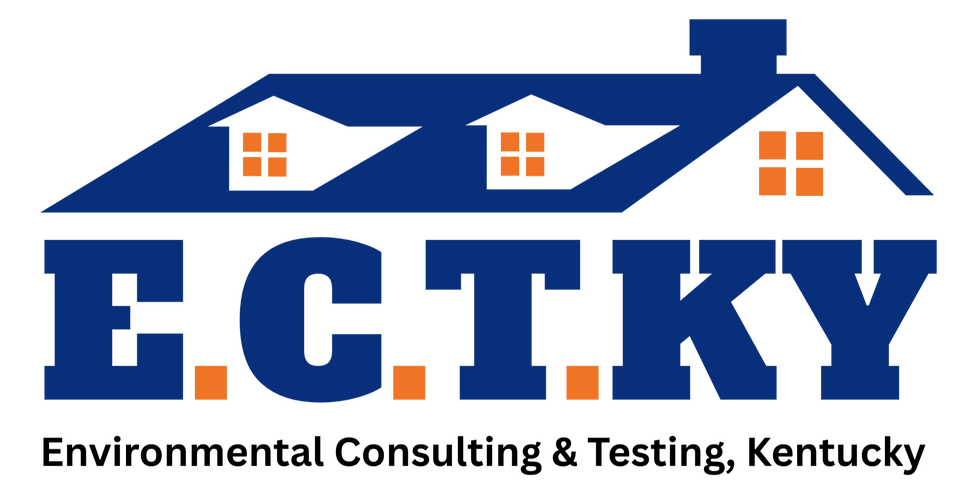Understanding the Link Between Water Leaks and Mold Growth
- ECTKY

- May 23
- 4 min read
Mold can be a hidden threat in many homes, and its growth is often linked to water leaks. Surprisingly, not only serious leaks or major flooding can lead to mold infestations. Even minor leaks can create the right conditions for mold to flourish. In fact, mold can start to grow within just 24 to 48 hours under ideal circumstances, making it crucial for homeowners to act quickly.

The Nature of Water Leaks
Understanding the different types of water leaks is essential in preventing mold growth. Leaks can manifest in various forms. For instance:
Piping Leaks: These are common and can happen due to corrosion, poor installation, or wear and tear. According to the American Society of Home Inspectors, plumbing leaks account for about 15% of residential water use, indicating their prevalence.
Roof Leaks: Often the result of damaged shingles, roof leaks can introduce water that trickles down through walls and insulation. Regular roof inspections can catch issues before they escalate.
Window or Door Seepage: Faulty seals on windows and doors can let rainwater in. Homeowners should check and replace weather stripping regularly.
Appliance Malfunctions: Leaking dishwashers, washing machines, and refrigerators can go unnoticed, leading to water accumulation. A 2020 study found that appliance failures contributed to an estimated 50% of indoor leaks.
Foundation Cracks: Especially after heavy rainfall, cracks in the foundation can allow water to seep in, creating ideal conditions for mold growth.
Recognizing these types of leaks empowers homeowners to take preventive and corrective action.
How Mold Grows
Mold thrives in damp environments, which makes any undetected leak a potential issue. Here are the three fundamental requirements for mold growth:
Moisture: Mold needs water. This can result from leaks, high humidity, or condensation found in areas like basements.
Organic Material: Mold eats organic substances. Common items like wood, drywall, paper, and even household dust can provide food for mold colonies.
Temperature: Mold prefers temperatures between 60°F and 80°F, which aligns with comfortable indoor settings.
Without proper attention, the combination of moisture, organic material, and conducive temperatures can lead to mold proliferation within days.
Signs of Mold Growth
Identifying mold early can prevent serious damage to your home and health. Key signs to watch for include:
A Musty Odor: A strong, earthy smell is often among the first indicators of mold.
Visible Mold: Look for black, green, or white spots on walls and ceilings.
Water Stains: Discolored patches on surfaces are signs of dampness that may lead to mold.
Increased Allergies: If you experience more frequent sneezing or coughing, mold exposure might be the culprit.
Promptly recognizing these signs can help mitigate the risks associated with mold exposure.
Not All Water Leaks Lead to Mold
It's essential to acknowledge that not every leak results in a mold problem. Several factors can prevent mold growth:
Type of Moisture: If a leak is addressed and cleaned up quickly, it may not lead to mold development.
Ventilation: Areas with good airflow dry faster, reducing the chance of mold taking hold.
Temperature Control: Keeping areas cooler can hinder mold growth since the fungus prefers warmer conditions.
Being aware of these factors can equip homeowners to effectively manage their environments.
Proactive Strategies to Avoid Mold
Taking preventive steps against leaks and moisture can significantly reduce mold growth risks. Here are some practical strategies:
Regular Inspections: Routinely check plumbing systems and appliances for leaks. This can save homeowners up to 20% on water expenses and prevent mold.
Proper Sealing: Ensure windows and doors are properly sealed to keep rainwater out. A small investment in weatherproofing can save thousands in potential leak repairs.
Maintain Roofs: Inspect roofs regularly for any signs of wear. A well-maintained roof can reduce leaks by 80%.
Control Humidity: Use dehumidifiers in damp areas like basements to maintain humidity levels below 50%, making it less likely for mold to grow.
Act Quickly: Address leaks immediately to limit mold's opportunity to take hold.
Implementing these measures not only helps prevent mold but also supports the overall health of your home.
The Mold Remediation Process
If mold does appear, it is important to address the situation effectively. Here’s a simplified remediation guide:
Identify the Source: Fix the leak causing the issue. This step is crucial to prevent mold from returning.
Assess the Damage: Evaluate the extent of mold growth. Minor infestations can often be handled with household cleaners, while larger issues might need professional intervention.
Protect Yourself: Wear gloves, masks, and goggles when dealing with mold to protect your health.
Remove Affected Materials: Discard porous materials, like drywall or carpeting, that are severely contaminated.
Clean Surfaces: Non-porous surfaces can typically be scrubbed with a mold cleaning solution to ensure thorough cleaning.
Monitor: Keep an eye on previously affected areas for any signs of returning mold.
By following these steps, homeowners can efficiently tackle and eliminate mold issues.
The Importance of Professional Help
In cases of severe mold growth, consulting a mold remediation professional can be the most effective solution. These experts have the tools and knowledge necessary for thorough inspection and treatment.
Professionals typically undertake:
Detailed inspections to find hidden mold.
Advanced removal techniques based on the severity of the infestation.
Recommendations for moisture control to prevent future mold problems.
Investing in professional help can save homeowners from costly damage down the line.
Final Thoughts
Understanding how water leaks lead to mold growth is essential for homeowners. It is critical to stay informed and proactive. By being vigilant about inspections, addressing leaks quickly, and maintaining a healthy indoor environment, you can greatly reduce the risks associated with mold. If you're ever uncertain, don't hesitate to reach out to us today for all your water proofing and mold remediation needs. They can help ensure your home remains safe and mold-free.
By arming yourself with knowledge about water leaks and mold, you can take control of your home’s environment and promote a healthier living space.
_edited.png)
_edited.png)



Comments